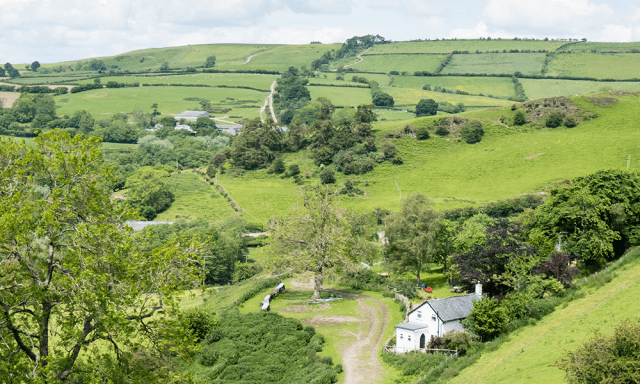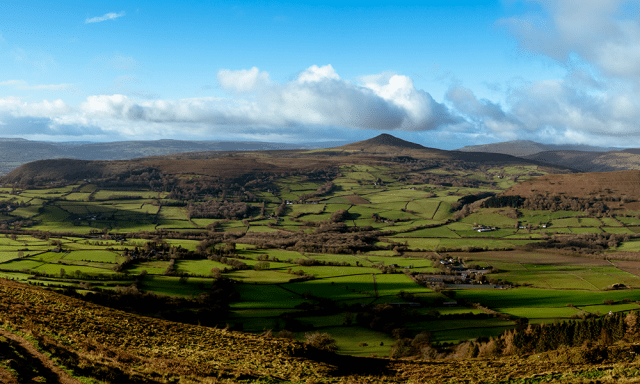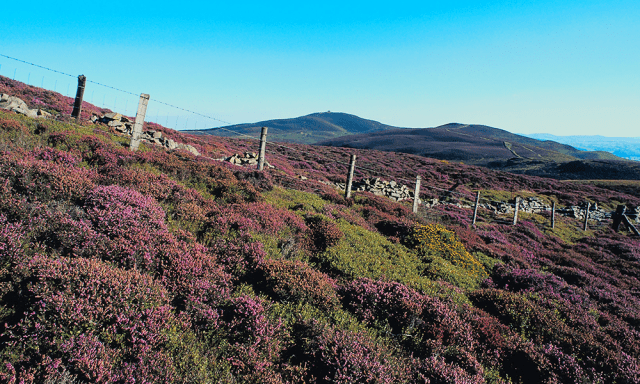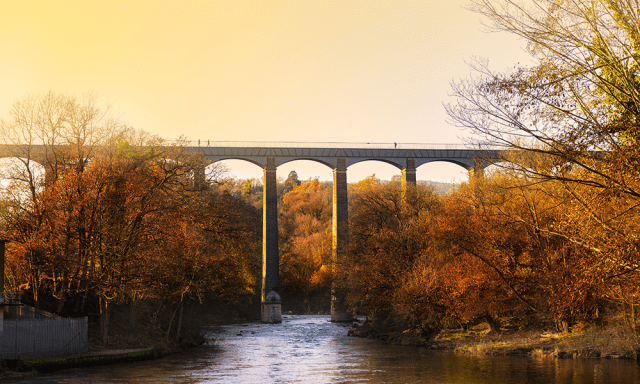Known as Britain’s longest ancient monument, Offa’s Dyke is a fascinating 1,200-year-old earthwork that crisscrosses in between the Welsh and English border, winding through rugged moorlands and mountainsides. Allegedly built in the Dark Ages, academics and historians generally accept that the dyke was originally constructed under the orders of the Anglian King Offa of Mercia during the 8th century to demonstrate his power and wealth. The present-day path, however, was built in 1971 to be used as a long-distance walking trail that primarily runs alongside or on top of the dyke for much of its 177 miles. And what better way is there to celebrate the 50th anniversary of the Offa’s Dyke than to uncover the paths truly incredible past on foot with Headwater? Read on to discover our two new trips that head to this largely undiscovered, but treasured region in the UK.

If you’re looking to walk the southern part of the Offa’s Dyke National Trail from Knighton to the fossil-rich Sedbury Cliffs on the Severn Estuary, then our Walking Offa’s Dyke Path (South) trip offers the perfect staycation this summer.
Start your journey with a beautiful walk to Hawthorn Hill that takes you past quaint farmland pastures towards the historic site of Owain Glyndwr’s Battle of Pilleth in 1402. Winding through Granner Wood overlooking the village of Evenjobb, you’ll end your first day in the attractive market town of Kington. Next, it’s onto the Hergest Ridge, where you can enjoy 360-degree panoramas of the hills of Shropshire. This spectacular view served as the main inspiration for one of Arthur Conan Doyle’s famous crime novels, Hound of the Baskervilles.

Continuing on your way, your route hugs the River Wye as you head towards, Hay-on-Wye, a Welsh border town famed for its profusion of bookshops and annual international literary festival. The following day, you’ll enjoy a gentle climb to the Black Mountains of the Brecon Beacons National Park, where you may be able to spot wild ponies and birds of prey including Red Kites, Peregrines and Sparrowhawks if you’re lucky. Afterwards, you’ll make your descent towards the ruins of Longtown, a 12th century Norman castle.

On day 5 you’ll reach the highest point along the Offa’s Dyke path at Hatterrall Ridge, which offers striking views overlooking the Vale of Ewyas and the towering Sugar Loaf mountain, before heading to the tiny village of Llangattock Lingoed where your route veers away from Offa’s Dyke for the last time. The rest of the trip takes you on a walk across Wye Valley, an Area of Outstanding Natural Beauty towards Tintern and Chepstow, where you’ll arrive at the end of the route at the Severn Estuary.
Should you want to extend your holiday and explore Britain’s longest monument in its entirety, then our 18-day Walking Offa’s Dyke Path (North to South) trip allows you to pass through eight counties, while crossing the border between England and Wales over 20 times, giving you a real flavour of both areas either side of the border.

Beginning near the trailhead at Prestatyn, you’ll enjoy discovering the beautiful Clwydian Range on foot. Walking over historic stone stiles that are unique to this section of the trial, you can bask in the views across to Snowdonia as you make your way to Bodfari village. After passing Iron and Bronze Age hillforts in Foel Fenlli, Moel Arthur and Penycloddiau, you’ll summit Moel Famau before heading into Llandegla Forest. This region is known for its picture-perfect heather-clad moorland and striking limestone crags.

Next, your route veers off towards the Pontcysyllte Aqueduct and Canal UNESCO World Heritage Site – one of the most outstanding examples of canal engineering in the late 18th and early 19th century Britain. If you have time, we’d recommend taking a small detour to visit Chirk Castle, a 13th-century medieval Marcher fortress on the Welsh-English border.
As your route reaches the Oswestry Old Racecourse, you’ll get the opportunity to delve into the rich industrial heritage of the region, with a visit to the limestone quarry of Llanymynech, before entering the Welsh Marches. With gentle walks along the Montgomeryshire Canal and River Severn, you’ll wander around the fascinating ruins of Montgomery Castle which was the site of the largest battle in Wales during the First English Civil War (1642-1646). You’ll see here that both the trail and the Dyke follow the true national boundary laid down by the Anglian King Offa of Mercia in the 8th century.
Heading further and further south along Offa’s Dyke, your route joins the southern section of the path, as you pass through slightly more challenging sections along the Shropshire Hills. Notable stops on your way towards the Sedbury cliffs in Severn Estuary, include White Castle, a ruined Norman castle near the village of Llantilio Crossenny, Monnow Bridge, the last remaining medieval fortified bridge in Great Britain and the beautifully preserved Chepstow Castle.
Our two new trips allow you to see some of the best sections of Offa’s Dyke, a fantastic monument that’s stood the test of time over the last millennium. So, why not take the opportunity to discover this mighty 177-mile legacy of 8th-century Anglo-Saxon history on an enchanting Headwater holiday this summer? If you’d like to browse more holidays in the United Kingdom for that perfect staycation, click here.